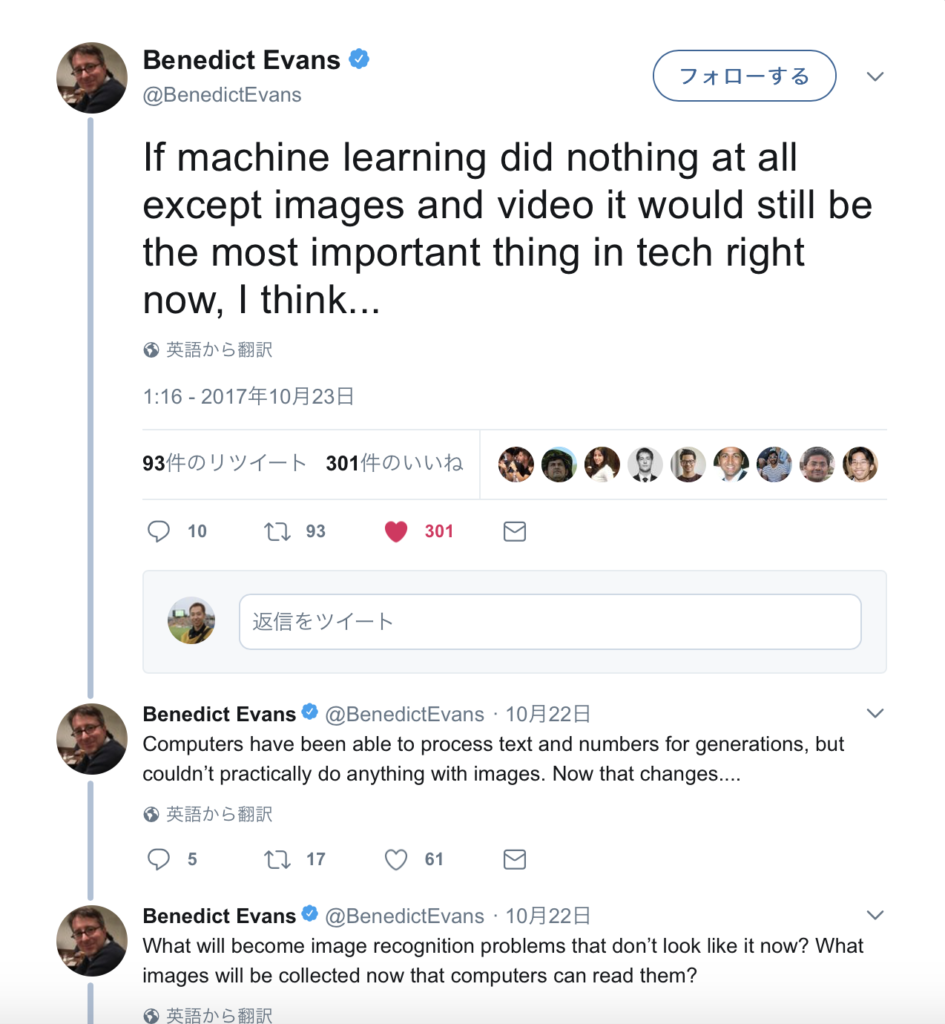AI – What Can Artificial Intelligence be Used For?
2017-12-28
AI is Popular, but confusing!
Artificial intelligence is very trendy right now – everyone is talking about it. “AI and Machine Learning” is the most popular search on Crunchbase today(as of Dec.5th, 2017), and it shows 2,491 startup companies claiming to be in AI!

Therefore, large companies are faced with confusion – which AI startups to partner with? And perhaps even more confusing is, what exactly do they want to use AI for? What is the use case for their companies?
Definitions of Artificial Intelligence
Artificial intelligence can be defined as the capability of a machine to imitate human behavior. AI is progressing at an incredibly rapid rate, but for now, it has limitations as to what human behavior it can imitate today. One joke is that current AI technology is limited to whatever an adult can teach at 3 year old child. One example is self driving cars – we know that self driving cars will be coming, but the AI (and other) technology is not yet ready.
The well known venture capitalist Ben Evans from Andreessen Horowitz says, “the biggest impact with AI is that computers used to only understand numbers and letters, but computers understand images and videos.”

Use Cases of AI Are Not Obvious
You may be thinking, “Teach a computer to do what a three year old does?” “Understand a video?” What are the use cases for each company?
Here are some examples of the dilemma companies might face.
NHK has a large library of videos. They might use AI to help organize their videos better. That would be helpful, but not revolutionary. I expect NHK could find something less intuitive, but more impactful. For example, a teenager who posts a video on their social media, would find their own video linked to NHK content.
A large bank might read articles on AI, think about the video cameras they have in their branches, and wonder how to use AI for that video footage. That could be good, but I understand most banks that are using AI are actually using it to organize their processes around lending to make them both more efficient and more accurate.
The common theme here is the use cases are not immediately clear.
Some Interesting and Creative Use Cases
Both big companies and startups have found some creative uses of AI that you might not expect. Here are a few:
Square: Square is a well known company that lets small merchants accept credit cards. Square has also started offering loans to these merchants. Since they have tens of thousands of small merchants, a typical bank would not be able to judge risk of fraud. By using AI, they can very quickly and accurately judge fraud risk at very high volume, creating a whole new market that does not compete with traditional banks.

Alpaca.ai. Stock trading. This Japan/US startup takes the Algorithmic technology used by stock market players and lets anyone use it with a non technical interface! The AI just works and is hidden from the user. Tractica forecasted that stock trading will be the 2nd largest market for AI in the next decade.
ThirdLove. Bras. Many women dislike shopping for bras, and end up with bras that do not fit. Thirdlove is a popular startup that is using AI to better predict bra fit based on pictures, and then ships the proper size to a woman’s house directly so she doesn’t need to go to a store.
For Those Who Want to Try AI
Here are some things to consider for those who want to try AI in their companies.
1. Much of the technology is not that hard to try. Creating new AI technology is of course extremely challenging. However, most startups and big companies trying AI are using off the shelf/open source AI technology, such as TensorFlow.
2. It is not perfect. Machine Learning is AI that learns. But it’s not perfect. Facebook has just announced use of AI to help alert friends of people who may be contemplating suicide. Implemented poorly, Facebook could face problems such as falsely identifying people as suicidal. Presumably Facebook can navigate these risks, but not every company would be able to.
3. Can cause cross organizational challenges. Some companies use AI to create “insights from one customer to help other customers.” In a large company, that may cross many organizational boundaries and raise privacy flags.
4. It is hard to navigate. There are big challenges are trying to figure out exactly what AI is best used for at any given company. For those looking for an external AI vendor, navigating the thousands of startups can be even more confusing.
Hope the points mentioned above are somehow helpful for those who are thinking of using AI.
Written by Ron Drabkin, Venture Partner at DreamVision Inc. Serial Entrepreneur & Angel Investor based in Silicon Valley.